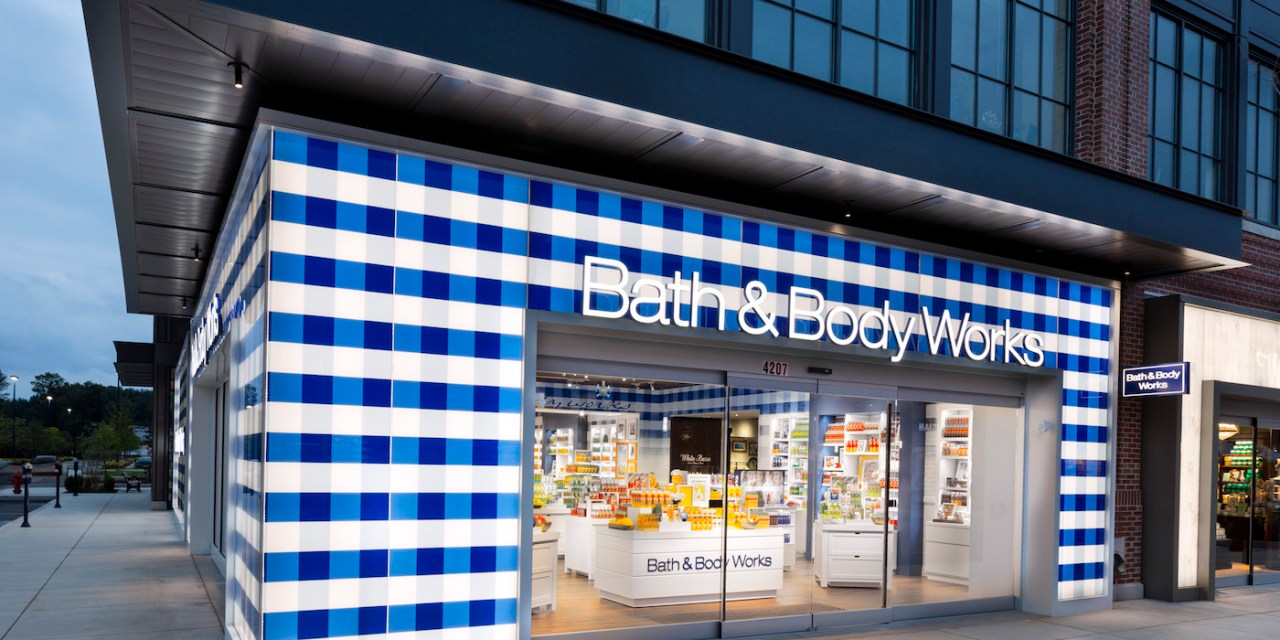As it prepares for life as an independent company, Bath & Body Works lays out its plan

For the past couple of years, Bath & Body Works has been the one bright spot of L Brands, reporting positive comparable sales growth while Victoria’s Secret has been reporting declining sales. Soon, the mall-based lotion and candle retailer will get a chance to stand on its own.
Last month, private equity firm Sycamore Brands announced that it is taking a majority stake in Victoria’s Secret and intends to take the lingerie brand private, which would leave Bath & Body Works as an independent, publicly-traded company. During L Brands’ fourth-quarter earnings call last week, executives laid out their plan for ensuring that sales continue to grow at Bath & Body Works over the next year, namely by opening more international and off-mall locations, as well as investing in some long-overdue digital capabilities, like rolling out buy online and pick up in-store, and revamping its loyalty program.
During 2019, Bath & Body Works reported a record $5.19 billion in sales, with store sales up 5% prior compared to the year before. Its success has been fueled by carrying scent-based products like lotion and candles that many customers still prefer to buy in store instead of online, and continuously refreshing its merchandise with seasonal collections that bring customers back in store multiple times a year.
“Bath & Body Works’ store footprint represents in many ways the future of mall-based retail,” Hilding Anderson, head of retail strategy at Publicis Sapient said. “I think it’s quite remarkable the run they’ve had over the past several years.”
“Unlike Victoria’s Secret, they’ve been following more of what’s happening in the retail market and what trends consumers are interested in,” Jessica Ramirez, retail research analyst at Jane Hali & Associates said.
But Bath & Body Works’ ascent is made all the more remarkable by the fact that it hasn’t yet rolled out many of the digital services that have become table stakes for other retailers, like buy online pick-up in-store.
Bath & Body Works has a lot of room left to grow as the brand simply has a lot more places where it can still open stores. Right now, the majority of is stores are still in the U.S. It has zero stores in the U.K., France, Germany, Japan or China. L Brands CFO Stuart Burgdoerfer said last week during the company’s fourth-quarter earnings call that Bath & Body Works plans to open more stores abroad, primarily through franchising, but did not say in which regions specifically the chain would focus on.
While historically the majority of Bath & Body Works’ stores have been located in enclosed shopping malls, Bath & Body Works is now turning its attention to opening stores in strip malls. Burgdoerfer said that now, about 45% of Bath & Body Works’ stores are located outside of enclosed malls and that “substantially all” of the stores that Bath & Body Works plans to open in 2020 will be outside of enclosed malls.It’s an important move to ensure that Bath & Body Works remains set up for success as fewer shoppers continue to visit malls.
Another piece of relatively low-hanging fruit for Bath & Body Works to address is to invest more in e-commerce. Brick-and-mortar continues to make up the majority of its sales. Executives have been adamant that customers like coming into stores in order to smell candles and lotions before buying them. But there are still some investments that Bath & Body Works can make to encourage its most loyal customers to buy both online or in-stores.
For example, Bath & Body Works does not yet have a mobile app available for all customers. The company does have a mobile app available for members who are eligible to use its new loyalty program, which is currently being tested in 300 of Bath & Body Works’ 1,619 U.S. stores. The new loyalty program that Bath & Body Works is testing out is point-based, and while the retailer is still refining what rewards will still be available, customers will be able to redeem points for free products, as well as early access to new items.
“Mobile is for most retailers a dominate channel,” said Anderson. “I would think for a younger audience…it is going to be very important for them, and then obviously you can use that mobile experience to send pretty targeted offers.”

